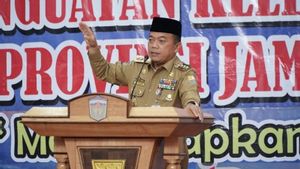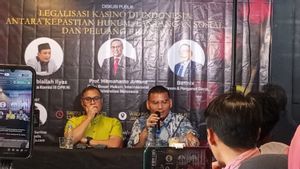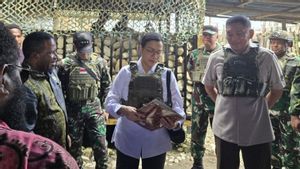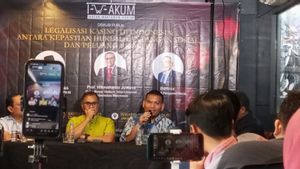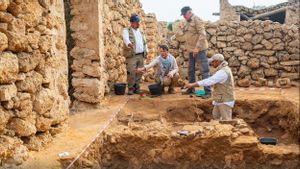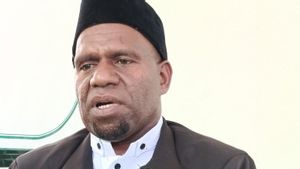JAKARTA - People do not need to worry about the implementation of a power plant business in the country. In addition to technology that is now more environmentally friendly and has been adopted by many PLTUs, various government regulations confirm the guarantee of an environmentally friendly generator business. One of them is the Minister of Forestry and Environment Regulation No. 15 of 2019.
Director General of Pollution and Environmental Damage Control (Dirjen PPKL), RM Karliansyah, said the government certainly does not allow businesses that pollute the environment. The government emphasizes that the public does not need to worry about the implementation of the PLTU companies that are now operating, let alone the ones that are being built.
"With the rules contained in Permen No.15 of 2019, the quality standard is much stricter than the previous quality standard. Coaching will also be carried out continuously so that power plant operations are more compliant with integrated monitoring with CEMS (Continous Emission Monitoring System) to KLHK through SISPEK (Company Continuous Emission Monitoring Information System) as a form of the company will be directly monitored, "said RM Karliansyah, in his statement, Friday, September 25.
He said, the preparation of this Permen had also involved various stakeholders, such as supervisory agencies (Ministry of Energy and Mineral Resources), companies, associations, local governments, and universities. The quality standards that apply in this regulation are much more stringent when compared to the quality standards that apply in the Asian region and adopt international regulations.
In particular, Director General Karliansyah said that the application of emission control technology is a determining factor in supporting the fulfillment of emission quality standards by all types of power plants.
Emission ControlNow, many generators have used emission control devices, namely particulates with an Electrostatic Precipitator (ESP) or Bag House Filter, Nitrogen Oxide (NOx) using a Low NOx Burner and Sulfur Dioxide (SO2) with Flue Gas Desulfurization (FGD).
And, the government also monitors each generator. For generators with a capacity of> 25 MW or <25 MW with sulfur levels above 2 percent, they must use CEMS equipment. Meanwhile, PLTMG which has a capacity of> 15 MW must install CEMS.
The Director of Electricity Program Development of the Ministry of Energy and Mineral Resources, Jisman Hutajulu, emphasized the same thing. The accusation of environmental pollution in the PLTU construction exploitation is inappropriate. The government gives permission for PLTU management to be environmentally friendly.
The National Electricity General Plan (RUKN) clearly states that going forward, PLTU must be environmentally friendly and efficient. One of them is by applying low-carbon technology and high efficiency or High Efficiency and Low Emission (HELE) so that the basic cost of supply or BPP is achieved.
"With this HELE technology, it will certainly meet the threshold set by the Ministry of Environment and Forestry," said Jisman.
He also explained that the existence of a coal-fired PLTU is the most efficient one that can reduce the cost of providing electricity. The end is the availability of a cheaper selling price for PLN electricity to customers.
Regarding the allegation of excess electricity capacity in Java Island, he also called it baseless. The Directorate General of Electricity's records show that the western Java regional power plants bear the most electricity load.
Jisman described, the condition of the Java-Bali power system as of 9 September 2020 had a peak load of 26,253 MW with a supply capacity of 31,767 MW and a reserve margin of 21 percent.
"Therefore, PLN plans to locate new generators in West Java and relocate several old power plants from the Java Bali system to the KI / KEK / KSPN / SKPT / Smelter locations in order to obtain a regional balance," he concluded.
[/ read_more]
The construction of PLTU is now also part of the 35,000 MW Program which aims to increase national electricity capacity, which also encourages new renewable energy-based power plants or EBT.
Ultra Super CriticalMeanwhile, Chairman of the Association of Indonesian Private Electric Producers (APLSI), Arthur Simatupang, expressed the same thing. Arthur said, many PLTUs in Indonesia use the same advanced technology as in developed countries.
They mostly use ultra supercritical boiler (USC) technology. USC technology results in perfect coal combustion with much lower emissions making it more environmentally friendly.
He explained, USC also made the efficiency of using coal above 45 percent. For example, 1 kilogram of coal typically generates 2 kWh of electricity for a calorific value of 5,000. Meanwhile, with USC, 1 kilogram can be used for 2.1 kWh.
"This ultra supercritical boiler is much more efficient in using its coal to produce the same output. The use of coal consumption is much less. So it is far more efficient and environmentally friendly," he explained.
He explained that the design of PLTU and other generators has gone through a process of testing and study by various parties. The design was first tested by the Ministry of Environment and Forestry (KLHK), questioning its environmental aspects. The approval from the Ministry of Environment and Forestry was not halfway through, but from the beginning.
"So it's not from the middle. From the start, it has met the requirements of the amdal. So the amdal is also approved by the Ministry of Environment and Forestry. So when the power plant is under construction, all documents must have been approved from the start. In terms of emissions, waste management, and others, "he said.
[/ read_more]
The English, Chinese, Japanese, Arabic, and French versions are automatically generated by the AI. So there may still be inaccuracies in translating, please always see Indonesian as our main language. (system supported by DigitalSiber.id)






